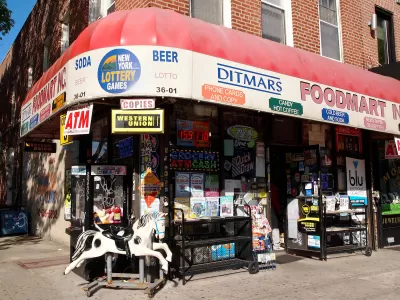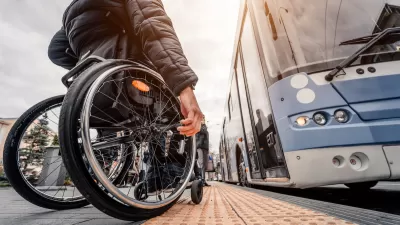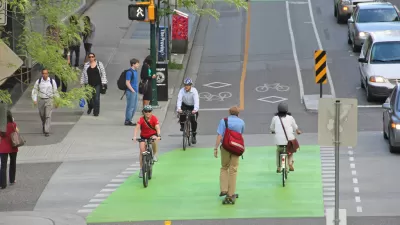A popular walkability assessment omits key factors that impact different demographics and can direct development resources to already wealthy neighborhoods.

A new paper from University of Illinois Chicago and University of California, Berkeley researchers throws into question the well-known ‘Walk Score,’ pointing out that “Windy City census tracts that were rated most highly by the popular real estate algorithm mapped almost exactly onto the census tracts with the highest share of white residents — and a literature review suggested that the same thing is likely true in other dense urban areas.”
Kea Wilson outlines the paper’s findings in Streetsblog USA., noting that researchers Kate Lowe and Anna Brand attribute this in part to the fact that the Walk Score scoring system omits significant factors such as pedestrian crash rates and pedestrian infrastructure, as well as what percentage of people actually walk instead of driving. “And it certainly doesn't get at how notions of ‘walkability’ might vary between different groups, like whether a resident can actually afford the boutique or shop at the non-halal grocery store on the corner, whether their kids get bussed to the school across town rather than the one down the block, and whether they're subjected to jaywalking laws that disproportionately target people of color practically every time they step foot into heavily-policed neighborhood.”
According to the researchers, ignoring these nuances skews results towards neighborhoods that already have desirable amenities and outright ignores some types of businesses. “Moreover, Lowe and Brand say that Walk Score tends to give even more points specifically to areas with a lot of restaurants, bars, shopping, coffee shops, and other ‘spaces of consumption’; places of worship, though, aren't included at all, and corner stores may not merit extra points, even though the researchers point out that they ‘can be important food sources in some low-income communities.’”
Calling the Walk Score tool a “self-fulfilling prophecy,” the researchers caution that “A market urbanism that suggests universal provision of walkable neighborhoods will fix inequities doesn't reflect the structural forces [in our cities] — and WalkScore, in particular, is about investment flows.”
FULL STORY: Is ‘Walk Score’ Really Just a ‘White Score’?

Maui's Vacation Rental Debate Turns Ugly
Verbal attacks, misinformation campaigns and fistfights plague a high-stakes debate to convert thousands of vacation rentals into long-term housing.

Planetizen Federal Action Tracker
A weekly monitor of how Trump’s orders and actions are impacting planners and planning in America.

In Urban Planning, AI Prompting Could be the New Design Thinking
Creativity has long been key to great urban design. What if we see AI as our new creative partner?

Pedestrian Deaths Drop, Remain Twice as High as in 2009
Fatalities declined by 4 percent in 2024, but the U.S. is still nowhere close to ‘Vision Zero.’

King County Supportive Housing Program Offers Hope for Unhoused Residents
The county is taking a ‘Housing First’ approach that prioritizes getting people into housing, then offering wraparound supportive services.

Researchers Use AI to Get Clearer Picture of US Housing
Analysts are using artificial intelligence to supercharge their research by allowing them to comb through data faster. Though these AI tools can be error prone, they save time and housing researchers are optimistic about the future.
Urban Design for Planners 1: Software Tools
This six-course series explores essential urban design concepts using open source software and equips planners with the tools they need to participate fully in the urban design process.
Planning for Universal Design
Learn the tools for implementing Universal Design in planning regulations.
planning NEXT
Appalachian Highlands Housing Partners
Mpact (founded as Rail~Volution)
City of Camden Redevelopment Agency
City of Astoria
City of Portland
City of Laramie




























